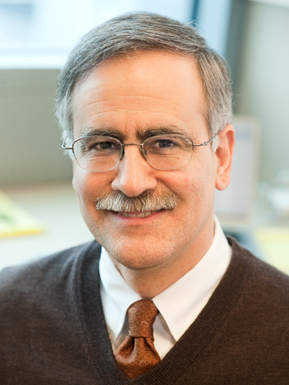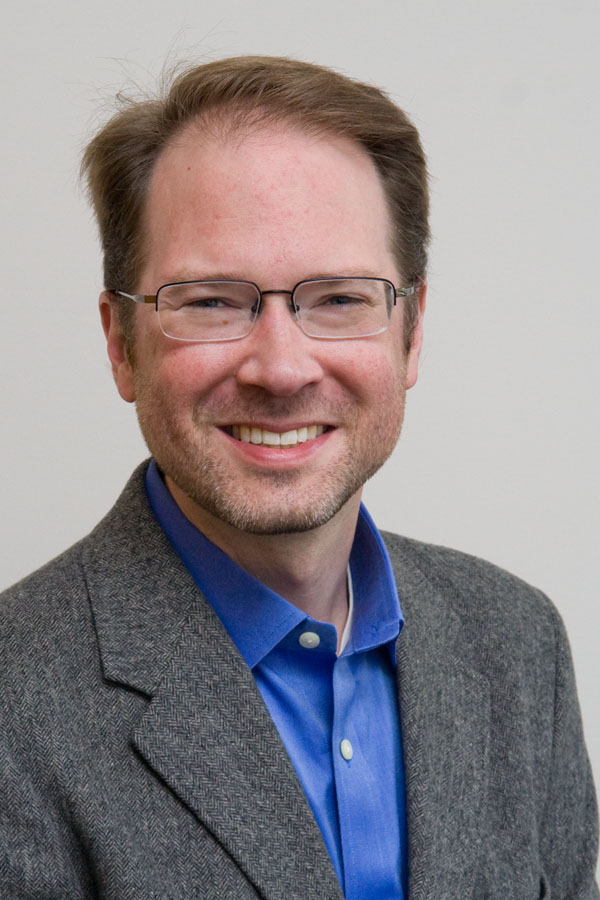Inorganic
Core Faculty
 |
John CaradonnaArea: Bioinorganic chemistryThe Caradonna Group is interested in the biological chemistry of non-heme iron. Approaches include the investigation of synthetic reactivity models, biophysical and mechanistic studies of natural metalloenzymes, and the rational design of metalloproteins. The Caradonna Group is investigating the chemistry of phenylalanine hydroxylase (PAH), a non-heme iron pterin-dependent monooxygenase that catalyzes the conversion of phenylalanine to tyrosine. Defects in PAH, which cause classic phenylketonuria (PKU), increase serum phenylalanine concentrations and result in abnormal accumulation of phenylalanine-based metabolic products. These products cause defective myelination of the central nervous system and result in postnatal brain damage and severe mental retardation. PKU is the most common inborn error in amino acid metabolism of clinical importance (1 in 50 individuals carry the disease trait, with an average incidence of 1 in 10,000 for Caucasians). The non-heme iron PAH-active site is of additional interest because it performs the same spectrum of chemical transformations as cytochrome P450 without benefit of a heme prosthetic group. The Group utilizes a variety of enzyme mechanistic, molecular biological, and biophysical techniques to investigate the mechanism of both wild type enzyme and selected mutants that induce PKU in humans. |
 |
Eric CuenyArea: Organometallic Chemistry and CatalysisThe Cueny Group combines interests in organometallic chemistry, catalysis, and sustainability. The goal of our research is the development of new catalytic approaches to utilize waste products of society (such as CO2 and/or waste plastic) as starting materials in the synthesis of fuels, commodity chemicals, and new materials. We are interested in both the synthesis of novel organometallic complexes to perform these challenging chemical transformations as well as the detailed kinetic and mechanistic investigation of these catalytic reactions. We will leverage cooperative catalytic strategies to achieve higher activity and selectivity in the proposed catalytic transformations. The cooperative catalytic strategies we are targeting include transmetallation chemistry, metal-ligand cooperativity, and bimetallic complexes. |
 |
Linda DoerrerArea: Fluorinated ligands for CatalysisThe Doerrer Group is intensely interested in the chemistry of transition metal complexes with fluorinated O-donor ligands including aryloxides as well as monodentate and bidentate alkoxides. These ligands facilitate oxidative stabilization of metals for catalysis, most recently in making reactive {CunOm}n+ moieties for C-H functionalization. New compounds are thoroughly investigated for their electronic structures which has revealed these fluorinated ligands to have the electronic effect of fluoride, without its extensive bridging or hydrolytic sensitivity. We are also synthesizing new compounds that have the potential to be one dimensional (1D) electronic conductors. Their goal is to use transition-metal based building blocks to assemble anisotropic systems whose combination will result in stable, processable materials with substantial charge transport. These materials are of great interest for answering fundamental questions about 1D charge transport and have tremendous potential in nano-scale electronics as nanowires. |
 |
Sean ElliottArea: Bioinorganic chemistry and metallobiochemistryThe Elliott Group uses Protein film voltammetry (PFV) to explore the electron transfer pathways and redox-dependent catalytic chemistry of complex metalloproteins such as sulfite reductase and multicopper oxidases. They also develop proteomic tools to enable probing the ‘metallome’ — a complete read-out of the metal-binding components of biological pathways. These experiments provide insights into the role of metal ions in biological chemistry. |